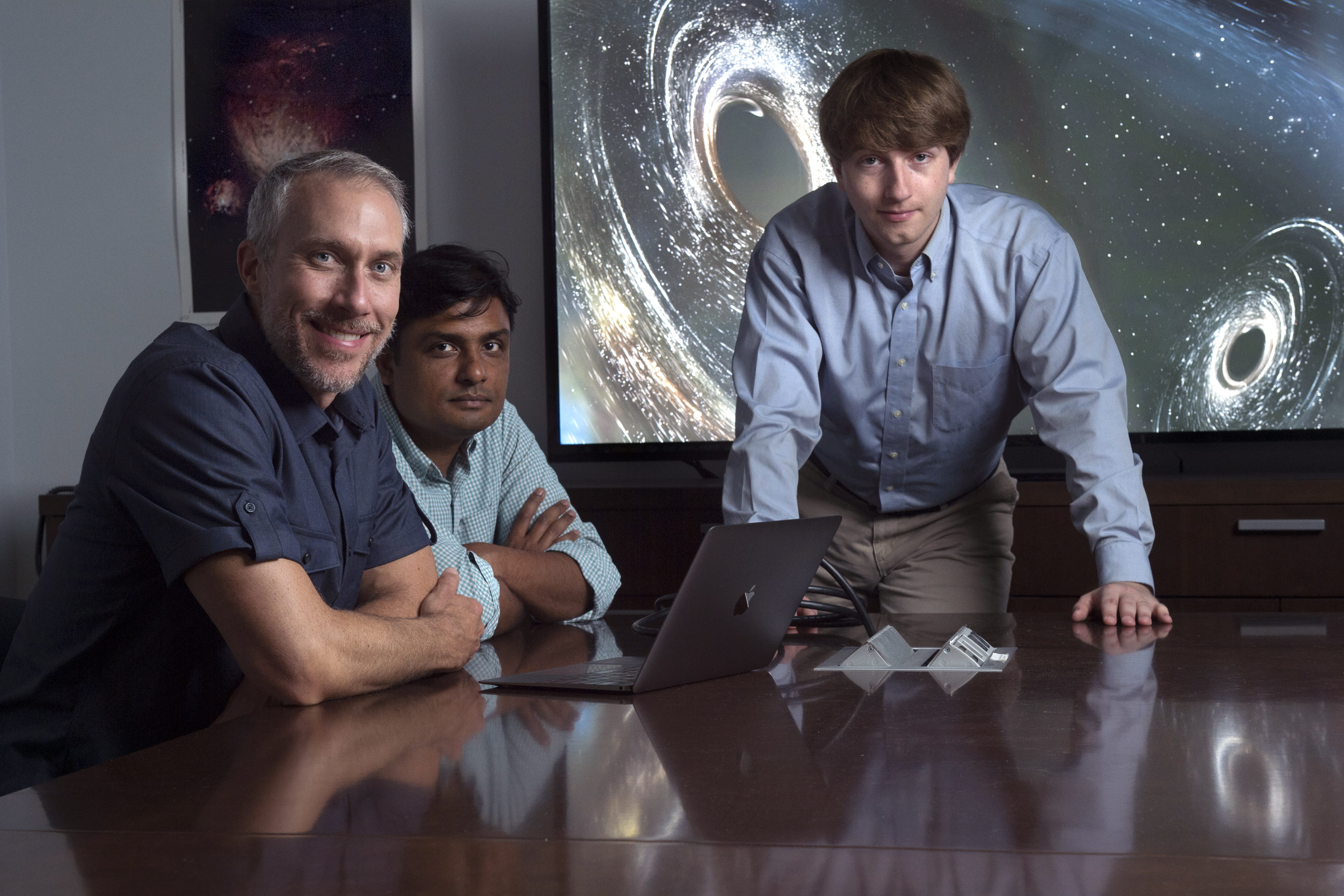UCI celestial census indicates that black holes pervade the universe
Researchers expect more gravitational-wave evidence of collisions in the near future

Irvine, Calif., Aug. 7, 2017 – After conducting a cosmic inventory of sorts to calculate and categorize stellar-remnant black holes, astronomers from the University of California, Irvine have concluded that there are probably tens of millions of the enigmatic, dark objects in the Milky Way – far more than expected.
“We think we’ve shown that there are as many as 100 million black holes in our galaxy,” said UCI chair and professor of physics & astronomy James Bullock, co-author of a research paper on the subject in the current issue of Monthly Notices of the Royal Astronomical Society.
UCI’s celestial census began more than a year and a half ago, shortly after the news that the Laser Interferometer Gravitational-Wave Observatory, or LIGO, had detected ripples in the space-time continuum created by the distant collision of two black holes, each the size of 30 suns.
“Fundamentally, the detection of gravitational waves was a huge deal, as it was a confirmation of a key prediction of Einstein’s general theory of relativity,” Bullock said. “But then we looked closer at the astrophysics of the actual result, a merger of two 30-solar-mass black holes. That was simply astounding and had us asking, ‘How common are black holes of this size, and how often do they merge?’”
He said that scientists assume most stellar-remnant black holes – which result from the collapse of massive stars at the end of their lives – will be about the same mass as our sun. To see evidence of two black holes of such epic proportions finally coming together in a cataclysmic collision had some astronomers scratching their heads.
UCI’s work was a theoretical investigation into the “weirdness of the LIGO discovery,” Bullock said. The research, led by doctoral candidate Oliver Elbert, was an attempt to interpret the gravitational wave detections through the lens of what is known about galaxy formation and to form a framework for understanding future occurrences.
“Based on what we know about star formation in galaxies of different types, we can infer when and how many black holes formed in each galaxy,” Elbert said. “Big galaxies are home to older stars, and they host older black holes too.”
According to co-author Manoj Kaplinghat, UCI professor of physics & astronomy, the number of black holes of a given mass per galaxy will depend on the size of the galaxy.
The reason is that larger galaxies have many metal-rich stars, and smaller dwarf galaxies are dominated by big stars of low metallicity. Stars that contain a lot of heavier elements, like our sun, shed a lot of that mass over their lives. When it comes time for one to end it all in a supernova, there isn’t as much matter left to collapse in on itself, resulting in a lower-mass black hole. Big stars with low metal content don’t shed as much of their mass over time, so when one of them dies, almost all of its mass will wind up in the black hole.
“We have a pretty good understanding of the overall population of stars in the universe and their mass distribution as they’re born, so we can tell how many black holes should have formed with 100 solar masses versus 10 solar masses,” Bullock said. “We were able to work out how many big black holes should exist, and it ended up being in the millions – many more than I anticipated.”
In addition, to shed light on subsequent phenomena, the UCI researchers sought to determine how often black holes occur in pairs, how often they merge, and how long it takes. They wondered whether the 30-solar-mass black holes detected by LIGO were born billions of years ago and took a long time to merge or came into being more recently (within the past 100 million years) and merged soon after.
“We show that only 0.1 to 1 percent of the black holes formed have to merge to explain what LIGO saw,” Kaplinghat said. “Of course, the black holes have to get close enough to merge in a reasonable time, which is an open problem.”
Elbert said he anticipates many more gravitation wave detections so that he and other astronomers can determine if black holes collide mostly in giant galaxies. That, he said, would tell them something important about the physics that drive them to coalesce.
According to Kaplinghat, they may not have to wait too long, relatively speaking. “If the current ideas about stellar evolution are right, then our calculations indicate that mergers of even 50-solar-mass black holes will be detected in a few years,” he said.
About the University of California, Irvine: Founded in 1965, UCI is the youngest member of the prestigious Association of American Universities. The campus has produced three Nobel laureates and is known for its academic achievement, premier research, innovation and anteater mascot. Led by Chancellor Howard Gillman, UCI has more than 30,000 students and offers 192 degree programs. It’s located in one of the world’s safest and most economically vibrant communities and is Orange County’s second-largest employer, contributing $5 billion annually to the local economy. For more on UCI, visit www.uci.edu.
Media access: Radio programs/stations may, for a fee, use an on-campus ISDN line to interview UCI faculty and experts, subject to availability and university approval. For more UCI news, visit wp.communications.uci.edu. Additional resources for journalists may be found at communications.uci.edu/for-journalists.